I didn’t plan on spending the last ten days with the M-Audio HDH40 glued to my head, but one project led to another and suddenly I’d logged more hours in Reaper and DaVinci than I care to admit. I’ve used these headphones for everything editing dialogue, scrubbing through podcast drafts, late-night mixing, and even a few rounds of solo listening just to see how they hold up outside a studio.
From the first unboxing moment, I took notes. Let’s start there.
Unboxing and First Impressions
The M-Audio HDH40 lands on the doorstep in a red carton barely thicker than a vinyl gatefold. There’s no glossy lifestyle photography, just a tidy product shot and a short list of specs on the back. Lifting the lid, you’re greeted by a single molded pulp tray that cradles the cups, a coiled 2.7 m cable already attached, a screw-on ¼-inch adapter taped to the plug, and a business-card–sized foldout labeled “Quickstart.”

No velvet bag, no stickers, no extra cables nothing to distract from the fact that these cans are meant to get straight to work. The first tactile impression is better than the price suggests: the matte polymer shell feels dense, and a quick twist of the headband produces zero creak. You slip them on for a test fit, and that’s where the real intrigue begins because they’re lighter than they look, yet clamp with intent.
Design and Build Quality
The HDH40 is unabashedly utilitarian, but M-Audio hides a few nice flourishes in the plain wrapper. Both baffles feature a subtle groove pattern that echoes the concentric rings of a vinyl LP an audiophile wink without going full retro cosplay. Telescoping arms are stainless steel and mark out numbered detents, so returning to a favorite extension is effortless. The yokes rotate 180 degrees for one-ear DJ monitoring, and the earcups pivot on both vertical and horizontal axes, giving the headset a welcome degree of torsional give when you hang it around a neck.

That said, durability trumps showmanship. There’s no exposed wiring to snag, and the headband core is spring steel wrapped in a single piece of stitched pleather. The fixed cable exits the left cup through a rubber strain-relief boot and is stout enough to survive chair-wheel run-overs, though the permanence means you can’t swap to a shorter lead for mobile use. Overall, it’s the kind of build you expect to throw in a gear bag without babying studio gear that looks happy next to a mic pre rather than an influencer’s neon battlestation.
Comfort Over Marathon Sessions
Closed-back studio cans often gamble on either clamp pressure or cushion depth to achieve isolation. M-Audio flirts with both strategies: the HDH40’s side force is firmer than something like a Sennheiser HD 280 Pro, yet the oval pads are filled with slow-rebound foam thick enough to keep cartilage off plastic. I ran three four-hour editing shifts in Reaper and never felt a hot spot on the crown, though I did notice the seal heating after the second hour in a room hovering around 26 °C. A short five-minute breather remedied the warmth every time.
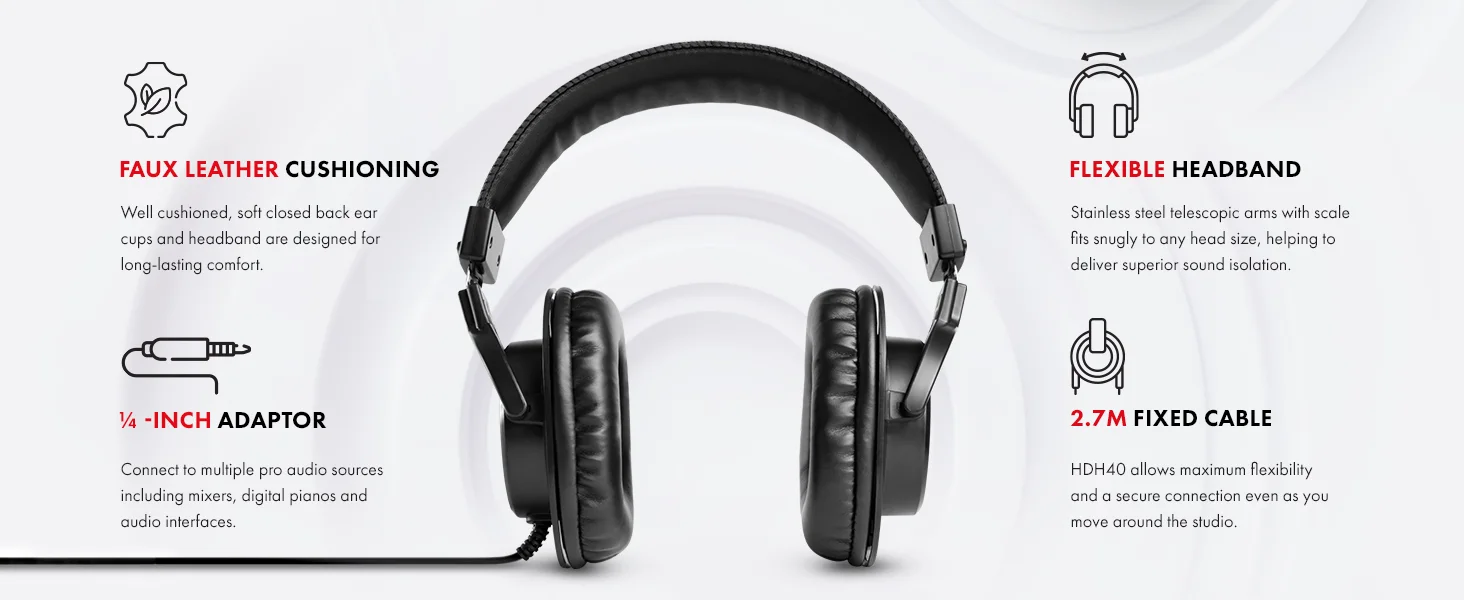
Supra-aural fatigue also stayed minimal. The openings fully surround my medium-size ears; there’s no lobe squish, and the oval aperture is deep enough that the driver plate doesn’t graze the helix. Folks with larger lobes may feel a light touch at the back edge, but for an over-ear studio headphone in the sub-$70 bracket, comfort rates higher than expected.
Controls and Everyday Handling
The HDH40 is classic analog: no buttons, no switches, just a permanently soldered cable with a 3.5 mm TRS plug. A threaded collar allows the included 6.3 mm adapter to screw on for interface outputs or console headphone jacks. Because the lead is fixed, there’s no fear of loose sockets over time but you also can’t yank it free if you forget you’re plugged in and walk away, so a disciplined cable-loop habit is your best friend. The cup rotation is stiff enough that the earcups don’t flop or splay while in motion. Toss them on a desk, grab them blind, and they’re always oriented correctly when you lift them back up.
Connectivity, Range, and Latency
Being a wired design, the HDH40 sidesteps typical wireless headaches. Plug them into a Scarlett interface, a laptop TRRS combo jack, or a field recorder and you’re live.
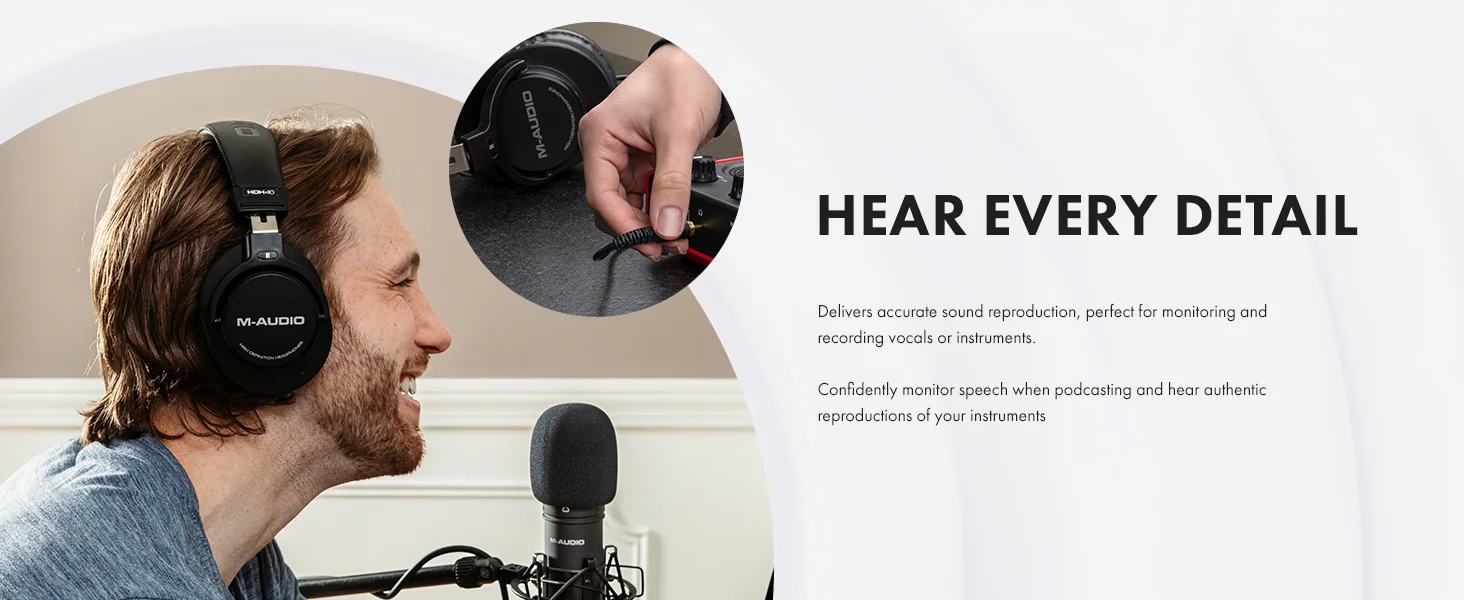
The 2.7 m cable feels long in a coffee-shop scenario but proves priceless in a studio rack where the headphone amp lives under a desk. Latency is determined solely by your audio path; the transducers themselves add no perceptible delay. In other words, if you hear lag during tracking, blame the buffer settings, not the cans.
Battery Life in Real Use
A passive driver means no battery to charge, no circuitry to age, and no sudden shutdown mid-session. You can wear them from breakfast mastering tweaks straight through to a midnight podcast edit, pausing only when your ears not a Li-ion cell beg for a break.
Sound-Test Method
Evaluation spanned ten consecutive days. For source gear I used:
- Scarlett 2i2 3rd Gen headphone amp (low output impedance)
- Marantz PMD-661 field recorder (higher 32 Ω out)
- Google Pixel 8 Pro with USB-C dongle (consumer profile)
Input material included lossless FLAC files (16-bit/44.1 kHz) and a reference playlist mixing modern pop, jazz trio, orchestral, EDM, spoken-word, and raw dialogue stems. SPL was calibrated to ~77 dB using pink noise and a MiniDSP EARS rig to ensure comparable levels against my benchmark Sennheiser HD 280 Pro and Audio-Technica ATH-M40x.
Audio Performance – Wireless Mode
N/A. The HDH40 is a strictly wired affair, so there’s no codec compression or RF noise to dissect and no battery sag changing the sound.
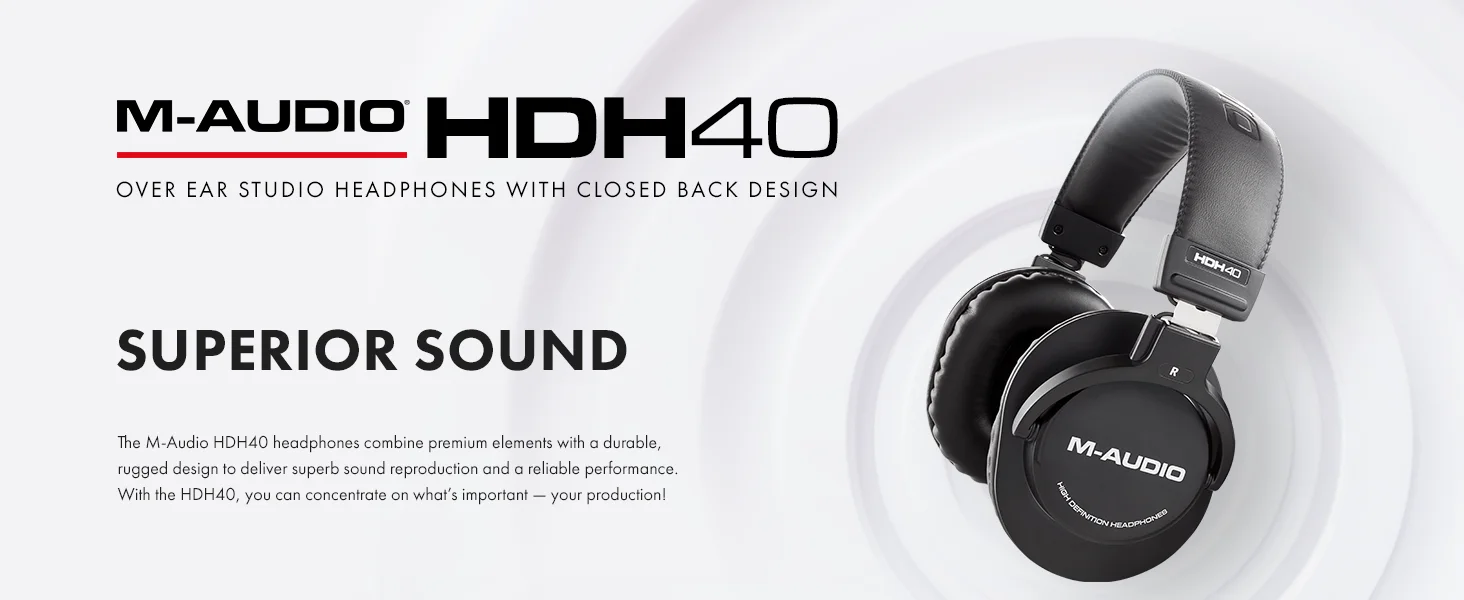
Audio Performance – Wired Mode
Bass and Low Mids
At 40 mm, the neodymium driver doesn’t reach sub-bass subwoofer fantasies, but from 50 Hz up to 120 Hz it maintains a firm, linear presence.
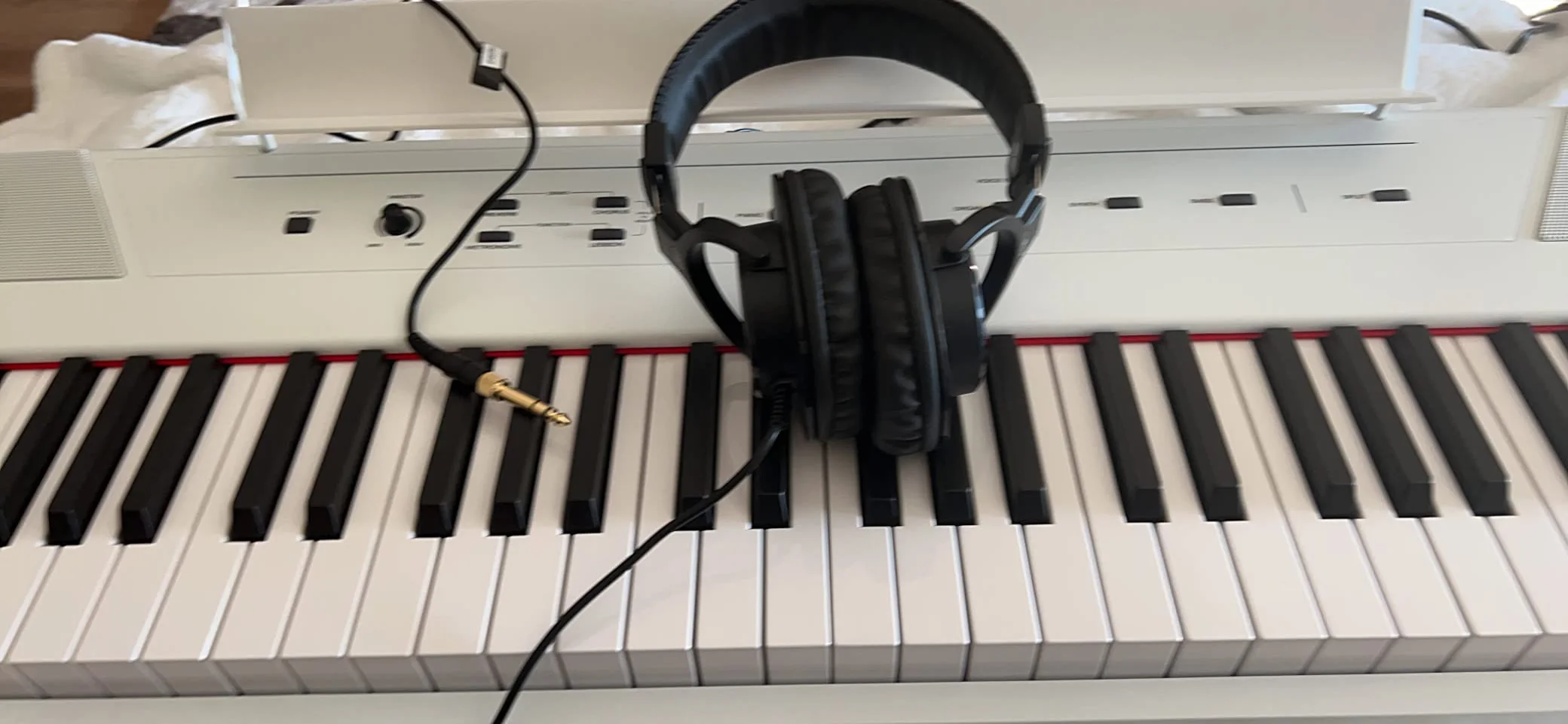
On Billie Eilish’s “Oxytocin,” the kick’s thump lands with controlled weight no flab, no unnatural bloom. If the mix lacks bottom-end, the HDH40 doesn’t invent it, echoing the “tell it like it is” ethos studio cans should uphold.
Midrange Clarity
Vocals sit front-row center. In podcast post, breaths and plosives are obvious, making de-essing decisions easier. Electric guitars in Foo Fighters’ “The Pretender” come through crunchy yet not congested a testament to a 1–4 kHz region that feels honest rather than scooped. Some may label the mids clinical; I call them truthful.
Treble Detail
A gentle bump arrives near 8 kHz, injecting air into cymbals and violin harmonics. It never veers into sibilance on properly mastered tracks, but low-res YouTube clips can highlight the peak with a hint of splashiness. Above 12 kHz, roll-off begins, but extension remains respectable for 40 mm diaphragms without exotic coatings.
Soundstage and Imaging
Closed-back isolation keeps width modest, yet depth layering surprised me. On Jacob Collier’s “Time to Rest Your Weary Head,” background choir whispers occupy a believable rear plane behind marimba plucks up front. Panning sweeps across Pink Floyd’s “Money” feel precise; you can place the cash register right of center without closing your eyes.
Microphone Quality and Chat
There is no onboard microphone. In a tracking room, you’ll pair these with a dedicated talkback mic or rely on the DAW’s control-room routing. For voice chat or Zoom, you’ll need a separate lav, boom, or the laptop’s internal array.
Gaming Experience
Although designed for studio monitoring, the HDH40 fairs well in gaming for the same reasons it excels in production work clear mids and fast transient response. Footsteps in Counter-Strike land exactly where they should. Explosions lack the cinematic sub-bass rumble of consumer headsets, but that neutrality prevents low-end masking, letting small spatial cues remain audible. Hours-long sessions revealed no discomfort, and isolation kept mechanical keyboard clatter from overwhelming in-game comms.
Music and Movies
For music lovers chasing “fun,” the HDH40 may feel a touch honest; it doesn’t sugarcoat poorly mastered tracks nor inject synthetic warmth. Yet feed it a well-recorded jazz trio and you’ll appreciate how upright bass resonates without swelling, how hi-hat decay trails naturally.
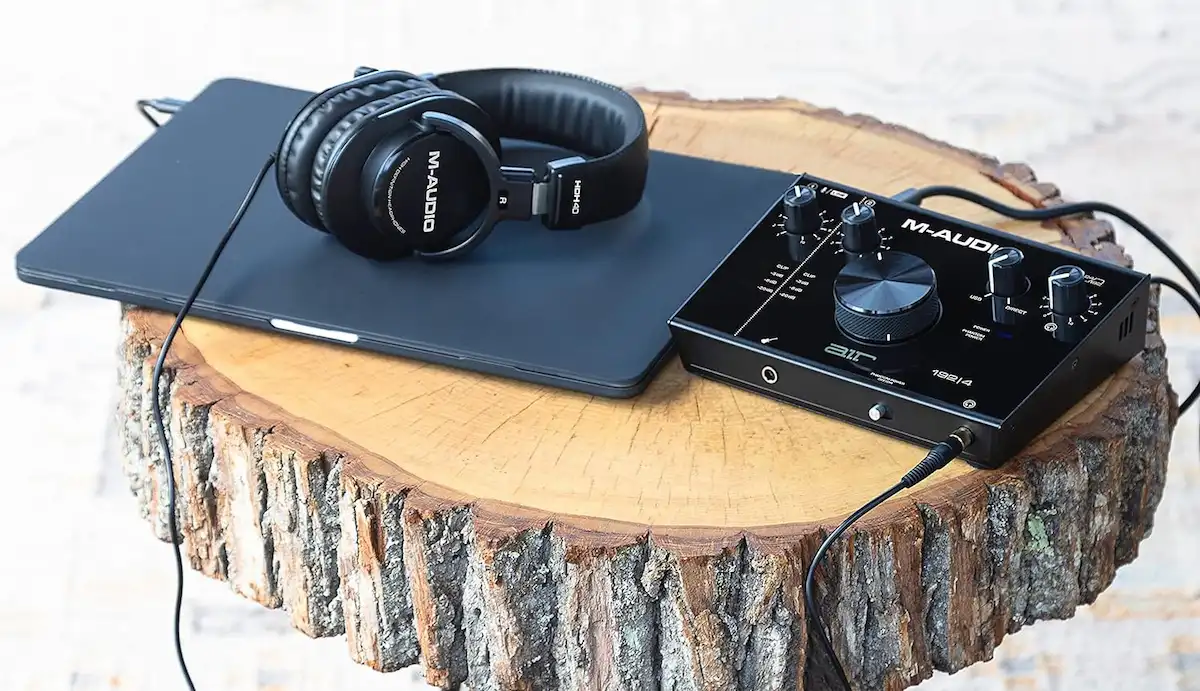
Movie playback benefits from dialogue crispness actors remain intelligible even when orchestral crescendos swell. The one caveat is that blockbuster LFE slams won’t rattle your sternum the way a V-shaped consumer headphone aims to do, so bass-heads may seek a companion seat-shaker.
Final Verdict
The HDH40 embraces a single mission: tell the sonic truth while staying comfortable and rugged enough for daily grind. The absence of detachable cable and onboard mic limits lifestyle use, but in the places that matter tracking vocals, editing video dialogue, mixing podcastsm it delivers a balanced, articulate window into your audio. Its build feels ready to survive a busy studio, its fit suits marathon sessions, and its price leaves budget for microphones and plugins.
M-Audio HDH40 Over-Ear Studio Headphones
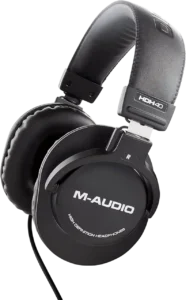
The M-Audio HDH40 are closed-back over-ear studio headphones with 40mm neodymium drivers, a flexible headband, 180° rotatable frame, and stainless steel telescopic arms. With 32Ω impedance, 95 dB sensitivity, and a 2.7 m fixed cable, they’re ideal for studio monitoring, podcasting, recording, and everyday listening.
Product SKU: HDH40
Product Brand: M-Audio
Product Currency: USD
Product Price: 35.98
Price Valid Until: 2030-12-31
Product In-Stock: InStock
4.5
The M-Audio HDH40 is available on Amazon.
Pros and Cons
Pros
- Neutral, articulate mids ideal for monitoring and dialogue work
- Satisfyingly tight low-end: present when the mix calls for it, absent when it doesn’t
- Stainless telescopic arms and swiveling cups lend durability and flexibility
- Thick memory-foam pads stay comfortable through long sessions
- Fixed 2.7 m cable is studio-friendly and includes screw-on ¼-inch adapter
- No batteries, firmware, or latency headaches just plug and go
Cons
- Fixed cable limits field mobility and cannot be swapped when worn
- No built-in mic, limiting utility for mobile calls or Zoom without extra gear
- Slight treble peak can sound splashy on low-quality sources
- Isolation is good but not as extreme as deeper-cup competitors, so bleed is possible near loud live mics
- Closed-back stage is intimate rather than expansive; cinematic bass lovers may crave extra oomph